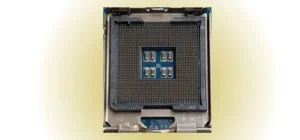![Can You Upgrade CPU Without Changing Motherboard? [2024]](https://www.ingameloop.com/wp-content/uploads/Can-You-Upgrade-CPU-Without-Changing-Motherboard.webp)
A processor or CPU is sitting there on the motherboard as the computer’s brain, and one of the essential elements is a system. It supervises the rest of the components in the system, so we have to ensure it works fine with the motherboard. It’s pretty tricky for older CPUs to handle the current-era games and applications. If you’re here on this post, it means that you want to upgrade the older processor to a new one to keep everything at its optimal level. Like every other component, you have to make sure of some crucial aspects before replacing the processor.
In addition, when replacing the CPU unit in your computer, there are a few things you should be aware of. This is the exact reason behind writing this post. We have answered all the queries related to whether can you upgrade CPU without changing motherboard or not. The answer is yes, but again, how? It’s important to know since if they are incompatible with one another, they won’t work. The processor should only upgrade if it’s compatible with the mother circuit. If not, you’ll have to replace or upgrade your motherboard and CPU, which is costly.
Key Takeaways
- Upgrading your CPU without changing your motherboard is possible, but it depends on the compatibility of the CPU socket and chipset.
- You need to check the specifications of your current motherboard and CPU, and compare them with the new CPU you want to buy.
- You also need to consider other factors such as power consumption, cooling system, BIOS update, and performance improvement.
- If your new CPU is not compatible with your motherboard, you will need to buy a new motherboard that matches the CPU socket and chipset.
- Alternatively, you can upgrade your entire PC or buy a pre-built one that meets your needs.
What are the steps to upgrade the CPU without changing the motherboard?
When selecting a motherboard, you should know a few terms, including chipset, CPU socket, and compatibility. You must check the following factors before upgrading your CPU.
- Model of the CPU
- Investigating CPU socket
- Model of the motherboard
Here, we have explained the above factors in detail so you can get a better idea.
Check the CPU model
The first thing you must check about any processor is its model, generation, and series. There are several CPUs in the market from both Intel and AMD. But you have to ensure that the one you’re purchasing is good enough to give you optimal performance. In addition, what type of processor you need totally depends upon the usage and load requirements. If you’re a user who does everyday things like internet surfing or watching movies, you can work out with the Intel i5 5th-generation chip or AMD’s mid-tier processor.
In contrast, if you’re a hard-core gamer, I suggest you go for a top-tier processor like the above Intel i7 9th generation processor or AMD 9 5900x. Moreover, content creation needs pretty much the same load as gaming. So, make sure to look for some high-end processors in both Intel and AMD families. No doubt, a CPU is the main important computer element. You won’t like to get lags or bottlenecks when playing games or creating content on the computer. This is why checking whether it’s good enough for you is essential.
Investigate CPU socket
The CPU socket on the motherboard is the component that links the CPU to the other components of the system. Not all the processors are compatible with one socket. For example, suppose you have a motherboard with an LGA1200 socket and are already using a 10th Gen Intel Core i3 processor that also matches the LGA1200 socket. In that case, you can upgrade to a better processor within the 10th generation. Upgrade to processors from the newer 11th Generation t00, as the 11th Gen CPUs support the same LGA1200 socket.
The motherboard’s “socket” maintains the CPU in place and attaches it to the other electrical parts of the PC. A CPU is inserted into a socket or slot depending on the model. Today, the majority of processors plug into a socket. There are various sockets, including the pin grid array, square sockets surrounded by even rows of holes, and the staggered pin grid array. Each variety features unique slots, pins, and dimensions, with pins distributed equally around the circumference.

Installing a CPU on a socket that is incompatible with your architecture is impossible. Therefore, it’s crucial to understand which socket your motherboard uses in order to avoid selecting the incorrect processor. Make sure you select the correct socket for your processor. If you plan to improve the performance of your device by updating the CPU on your previous motherboard, you must first locate your CPU socket and compare it to your motherboard. Here are a few methods for determining your Intel CPU socket:
Step 1: Navigate to the CPU website.
Step 2: Enter your CPU model after clicking the search button.
Step 3: Check for Sockets Support, which shows the supported CPU sockets.
Check the motherboard model.
Your computer’s motherboard is one single circuit board that serves as the foundation for all your computer’s other components, including the processor. The motherboard graphics card is a computer’s central processing unit that connects all other components. There are two types of motherboard chipsets: integrated and discrete. Most low-end desktop PCs and laptops use integrated chipsets, but discrete chipsets are more frequent in high-end systems.
Here’s how to determine your motherboard’s model
Step 1: Press Window + R to bring up the Run Window section.
Step 2: Type CMD in the popped window
Step 3: Press Enter
Step 4: Now, Type “wmic baseboard get product, manufacture, version, serialnumber”
Step 5: Some information would be popped up; Read it.
Does upgrading the CPU enhance performance?
Most of the time, upgrading a CPU enhances the overall performance. But again, the condition is the same, and the processor must be compatible with the motherboard to perform well. It will perform better if you have a better CPU that follows all the above compatibility conditions. A faster processor would definitely boost the PC’s performance. It significantly impacts your computer’s operating systems and speed, so an upgrade will ensure you obtain better performance.
Can we upgrade the CPU on a laptop?
Many laptops have processors bonded to the motherboard, making it impossible to update them. Unless your laptop model has a detachable processor, which is the case most of the time, you cannot modify it at all. When your CPU and motherboard socket is the same, you can upgrade your laptop’s CPU. As a result, before updating your CPU on your computer, you must first check your CPU and motherboard type and locate your CPU socket. You can also take help from the steps given above.
Conclusion
Upgrading a processor improves the performance and speed of the computer. Well, can you upgrade CPU without changing motherboard? The short answer is yes; you can upgrade your CPU without upgrading the motherboard. But the way you do that depends on your device. You must first determine your CPU socket and motherboard model before upgrading your CPU. To determine what CPUs it will support, you must know your board’s revision and BIOS. If you want to upgrade your computer to a new CPU, you may or may not need to change the mother circuit.
The fundamental reason for this is that CPUs come in many sockets, and each motherboard is only built for one of these sockets. If the socket on a new CPU does not match the socket on your old motherboard, the CPU will not work, let alone fit, because it is physically impossible to attach the device. As a result, buying an altogether new PC is almost always your best option if you want an upgrade path that allows for many generations of CPUs. This guide makes it quite simple for you to fix your CPU problem.
Frequently Asked Questions
Do you need to change motherboard for a new CPU?
Not really. If the processor you’re upgrading has the same socket and is compatible with the motherboard’s chipset, you don’t have to upgrade your motherboard. On the other hand, if a new processor needs a different CPU socket other than what the board has, you have to upgrade the motherboard to put on the processor.
Can I install any CPU on any motherboard?
You can easily install a CPU on the motherboard if there is the same CPU socket. All you have to do is turn off your computer and push the retention lever and outward to remove the CPU. After that, take the new CPU (note: do not touch the bottom with naked fingers), place it on the socket, gently press it to its place, and take the retention level back to its position to fit it. If you want to know how to install a CPU cooler and apply thermal after installing the CPU, read this post on how to apply thermal paste.
Can I upgrade my CPU with my current motherboard?
Yes, you can upgrade the new processor with the current motherboard if it follows certain conditions. First, the board must have the same CPU socket with which your new processor is compatible. Second, a compatible motherboard chipset must be installed so the processor can perform well. You can use an older motherboard with the new CPU if it fulfills these conditions.





![Is an Intel Celeron Processor Good? [2024]](https://www.ingameloop.com/wp-content/uploads/Is-an-Intel-Celeron-Processor-Good-450x257.jpg)
